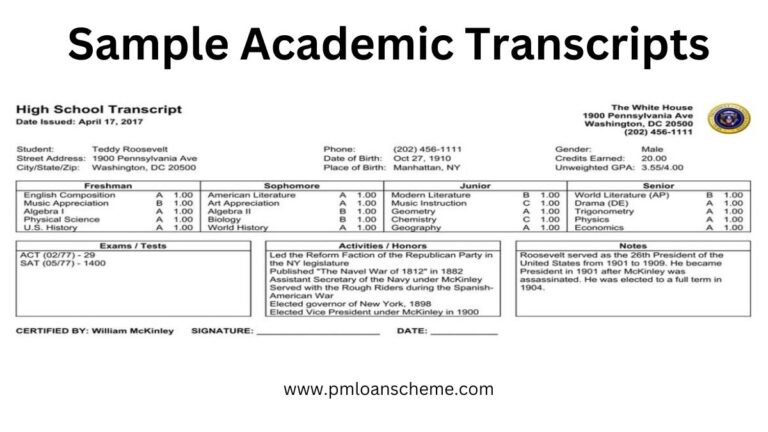SGPA Full Form
SGPA full form stands for SGPA (Semester Grade Point Average). SGPA is a grading metric used primarily in the education system to evaluate a student’s performance over a semester. Often considered a key indicator of academic success, SGPA is essential for students, educators, and institutions alike, as it provides an overview of a student’s achievement in specific subjects over a defined period. This article delves into the meaning, calculation, and significance of SGPA.
What is SGPA?
SGPA, or Semester Grade Point Average, measures the weighted average of a student’s grade points in all subjects taken during a semester. Different institutions may follow unique grading standards, but the objective is consistent: to gauge student performance across various courses in a fair, standardized manner.

Why is SGPA Important?
SGPA is crucial for multiple reasons: sgpa meaning
- Benchmark of Academic Performance: Provides a consistent metric for evaluating student achievements within a semester.
- Career Opportunities: Many organizations and educational institutions consider SGPA to assess candidates for admissions, scholarships, or employment.
- Self-Improvement Tool: Helps students identify areas of strength and areas needing improvement, aiding in academic growth.
How to Calculate SGPA?
Calculating SGPA involves determining the grade points received for each subject, multiplying each grade point by its respective credit, and dividing the sum of these values by the total credits for that semester. Here is a step-by-step process:
- Identify Subject Grade Points: Grade points vary based on the student’s performance, ranging from 0 (fail) to 10 (excellent).
- Multiply by Subject Credits: Credits are assigned based on the weight of each subject.
- Sum of Products: Multiply each subject’s grade points by its credits and add up all these products.
- Divide by Total Credits: The sum is divided by the total credits for the semester.
Formula:
SGPA = Total Credits / ∑(Grade Points×Credits)
Example Calculation
Let’s assume a student has the following grades and credits:
| Subject | Grade Points | Credits |
|---|---|---|
| Math | 9.0 | 4 |
| Science | 8.5 | 3 |
| History | 7.0 | 3 |
| Arts | 8.0 | 2 |
Using the formula:
The SGPA in this example is 8.21.
How SGPA Relates to CGPA
CGPA, or Cumulative Grade Point Average, is a broader metric that considers a student’s performance over multiple semesters, averaging their SGPAs over time. For instance, if a student has an SGPA of 8.5 in one semester and 8.0 in another, their CGPA will be the average of these two SGPAs.
SGPA to Percentage Conversion
Some institutions may require SGPA to be converted to a percentage. While conversion methods vary, one commonly used formula is:
This conversion may differ depending on institutional policies, so it’s essential to confirm the method with your school or university.
What is the difference between SGPA and CGPA?
Here’s a comparison table between CGPA (Cumulative Grade Point Average) and SGPA (Semester Grade Point Average) that highlights their key differences, features, and uses.
| Feature | SGPA (Semester Grade Point Average) | CGPA (Cumulative Grade Point Average) |
|---|---|---|
| Definition | Average of grade points earned in a single semester. | Average of grade points earned across multiple semesters. |
| Calculation Period | Calculated for one semester only. | Calculated over all semesters in a program/course. |
| Purpose | Reflects a student’s performance in a specific semester. | Reflects overall academic performance over time. |
| Formula | SGPA = Total Credits / ∑(Grade Points×Credits) | CGPA=∑SGPAsNumber of SemestersCGPA=Number of Semesters∑SGPAs |
| Weight of Courses | Each course’s contribution is based on its credit hours. | Average of SGPAs considers the weight of each semester’s courses. |
| Updates | Updated at the end of each semester. | Updated after the completion of multiple semesters. |
| Range | Typically ranges from 0 to 10 (or 0 to 4 in some systems). | Typically ranges from 0 to 10 (or 0 to 4 in some systems). |
| Importance | Important for immediate academic assessments and course performance. | Important for long-term academic evaluations, such as job applications and higher studies. |
| Impact on Academic Decisions | Affects eligibility for passing a semester and continuing in courses. | Affects graduation eligibility, honors classification, and applications for further studies or jobs. |
| Reporting | Usually reported on semester transcripts. | Reported on final transcripts upon graduation. |
SGPA vs CGPA
- SGPA is useful for assessing performance in individual semesters, helping students focus on short-term goals and course-specific requirements.
- CGPA, on the other hand, provides an overall picture of a student’s academic performance throughout their entire program, influencing graduation outcomes and opportunities for further education or employment.
Conclusion
SGPA is more than just a number; it reflects a student’s dedication, effort, and academic journey throughout each semester. With proper calculation methods and accessible tools like SGPA calculators, students can better understand their progress, set improvement goals, and prepare for future endeavors. Understanding and effectively using SGPA as a metric ensures students remain aligned with their academic objectives and are poised for future success.
FAQ: Common Questions About SGPA
Can SGPA be Negative?
No, SGPA ranges from 0 to 10, with 0 indicating failure and 10 indicating excellence.
How Does SGPA Impact Final CGPA?
CGPA is the average of all SGPAs across semesters. Higher SGPAs contribute to a higher overall CGPA.
Is SGPA Used Globally?
SGPA is widely used in various countries, particularly in Asia, but grading systems vary globally.


